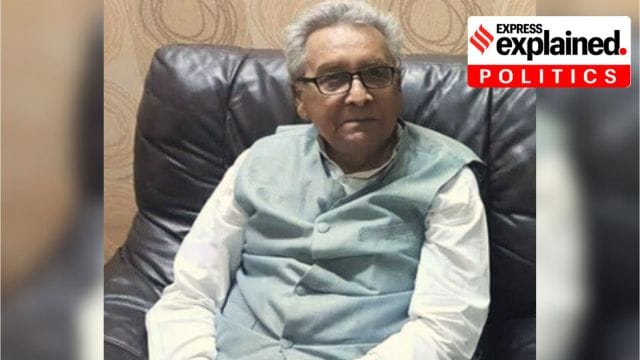
When Chief Minister Mahamaya Prasad Sinha resigned in January 1968, marking the end of his coalition government that comprised non-Congress parties, the SVD (Samyukta Vidhayak Dal) called for a Bihar bandh. Amid these shifts, Lohiaite politician-turned-Shoshit-Dal-founder BP Mandal was attempting to form a government with the help of the Congress.
At the time, he was not a member of either House of the state legislature. Such an individual can be appointed the CM if he has the relevant numbers in terms of support within the winning party or the coalition. He can retain the post if he contests and wins an assembly election within six months of taking the oath for chief ministership. However, from a political perspective, holding a seat in the assembly or council mattered for being appointed as a CM in that era.
After years of struggle within the Congress, where Other Backward Classes (OBC) were deliberately sidelined in their efforts to stake a claim to the party leadership, the time had come for an OBC leader to be at the helm. But until Mandal was elected to the Upper House of the state legislature, it was decided that Satish Prasad Singh would keep the seat warm. He took the oath on January 28, 1968, and BP Mandal was nominated to the legislative council on January 31. Singh resigned just after five days of his oath-taking to facilitate Mandal’s coronation.
The rise and fall of Satish Prasad Singh
Singh, born into a Koiry family (traditionally a farming community), was the first person from the OBC community to become the Chief Minister of Bihar. A native of Munger, he was elected as an MLA from the Parbatta Assembly constituency on an SSP (Sanyukt Socialist Party of Dr Ram Manohar Lohia) ticket. Following differences with Lohia, he formed the Shoshit Dal with leaders such as Mandal in August 1967.
Interestingly, in the adjoining state of Uttar Pradesh, the first OBC leader took oath for the chief minister’s post only in 1977, with Ram Naresh Yadav. Although Chaudhary Charan Singh became CM in 1967 and again in 1970, his Jat caste was included among OBCs in UP only in the year 2000, and is not listed in the central list.
Story continues below this ad
Singh’s early life involved hardships and struggles because of the social position he was born into. He chose to marry a woman of another caste, which invited resistance within his family and the larger community, but he did not budge from his decision.
He had earlier tried his luck in politics in 1962, contesting from the same Parbatta seat but on a Swatantra Party ticket, and lost. Again, in 1964, when the seat was vacant due to the demise of sitting MLA Lakshmi Devi, a by-election was held. Contesting as an independent candidate, he lost again, to the Congress’s SC Mishra.
After the CM stint in Bihar, he lost his political clout very rapidly. He was MLA only once between 1967 and 1969. In 1969, he contested on the Shoshit Dal ticket, but lost.
When the Congress party was split in 1978 into the old guard and the one led by Indira Gandhi, he joined the Indira-led faction, called Congress (I). He was elected to the Lok Sabha from the Khagaria seat in the post-Janata Party elections in 1980. Singh passed away in 2020, during the Covid-19 pandemic.
Story continues below this ad
Some level of political participation continues within the family. One of Satish Prasad Singh’s daughters, Suchitra Singh, is married to Nagmani Kushwaha, an ex-MP, ex-MLA and ex-minister of Bihar. Nagmani is the son of Jagdev Kushwaha, who was known for championing social reforms and fighting against feudalism. He died in a police firing incident while he was leading a protest on September 5, 1974, in Patna. Notably, Jagdev was an MLA in the same assembly that had Satish Prasad Singh as an MLA, and later, the chief minister.








































